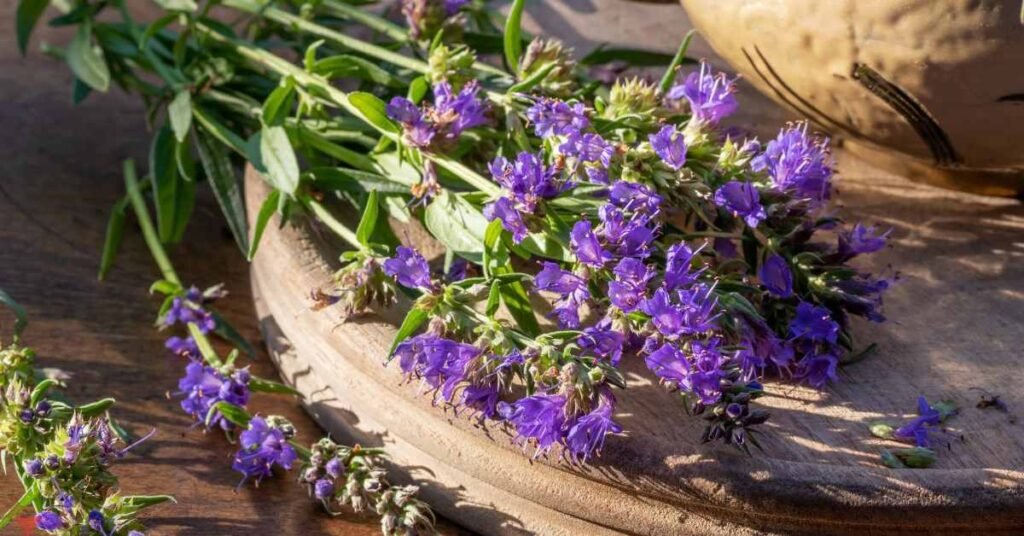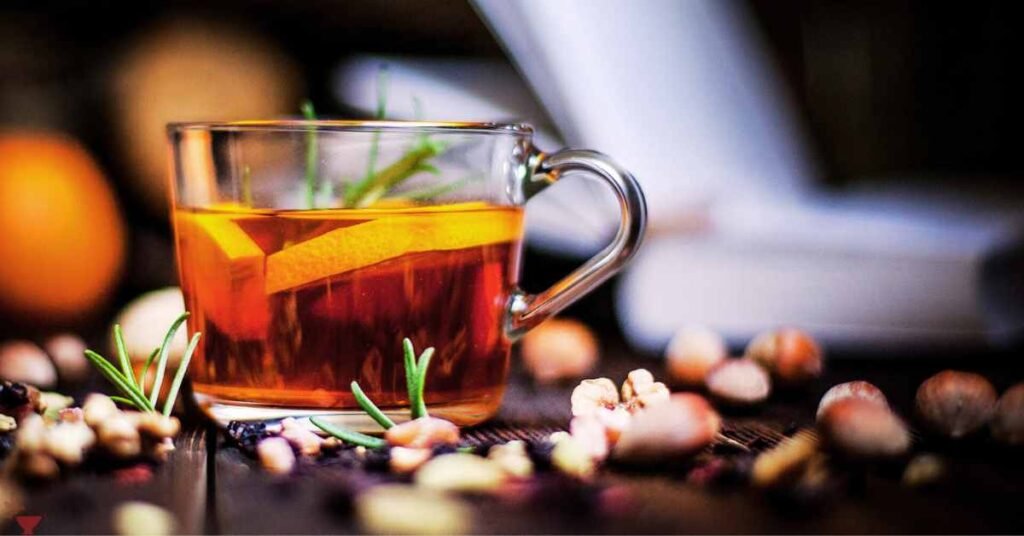Hyssop tea, derived from the Hyssopus officinalis plant, has been cherished for centuries for its medicinal properties, aromatic flavor, and cultural significance.
This herb, native to the Mediterranean region, holds a revered place in traditional medicine and culinary arts.
In this article, we will delve into the rich history, benefits, properties, and preparation of hyssop tea, drawing a parallel to the equally renowned lavender to provide a comprehensive understanding of both herbs.
History and Cultural Significance

Hyssop has a storied history, deeply rooted in ancient civilizations.
The ancient Greeks and Romans used hyssop for its antiseptic and medicinal properties, often employing it in purification rituals.
The name “hyssop” itself is believed to have origins in the Hebrew word “ezov,” meaning “holy herb.”
The Bible references hyssop in various contexts, emphasizing its significance in religious and cultural practices.
Lavender, on the other hand, has an equally illustrious past. Known as “lavare” in Latin, meaning “to wash,” lavender has been used since Roman times for bathing, scenting linens, and medicinal purposes.
The ancient Egyptians used lavender in the mummification process, and it has continued to be a staple in aromatherapy and herbal medicine.
Medicinal Benefits
Hyssop Tea:
- Respiratory Health: Hyssop tea is renowned for its ability to alleviate respiratory issues. It acts as an expectorant, helping to clear mucus from the respiratory tract, making it beneficial for conditions like bronchitis, asthma, and colds.
- Digestive Aid: The carminative properties of hyssop aid in digestion, helping to relieve bloating, gas, and indigestion. It stimulates appetite and can be used to address gastrointestinal discomfort.
- Antiviral and Antibacterial Properties: Hyssop contains compounds such as marrubiin and tannins, which possess antiviral and antibacterial properties. These help in fighting off infections and boosting the immune system.
- Antioxidant Effects: Rich in antioxidants, hyssop tea helps combat oxidative stress, reducing the risk of chronic diseases and promoting overall health.

Lavender Tea:
- Relaxation and Stress Relief: Lavender is famed for its calming effects. Lavender tea helps reduce anxiety, stress, and insomnia, promoting relaxation and improving sleep quality.
- Digestive Health: Like hyssop, lavender tea also aids digestion. It soothes the digestive tract, alleviating symptoms of indigestion, bloating, and nausea.
- Pain Relief: The analgesic properties of lavender make it effective in relieving headaches, muscle pain, and menstrual cramps.
- Anti-inflammatory and Antioxidant Properties: Lavender tea possesses anti-inflammatory and antioxidant properties, helping to reduce inflammation and protect the body from oxidative damage.
Properties and Composition
Hyssop:
- Appearance: Hyssop is a hardy perennial herb with woody stems, small, lance-shaped leaves, and clusters of blue, pink, or white flowers.
- Smell: The aroma of hyssop is a blend of minty and floral notes with a hint of camphor.
- Active Compounds: Key constituents include marrubiin, pinocamphone, isopinocamphone, and tannins, contributing to its medicinal properties.
Lavender:
- Appearance: Lavender is a perennial shrub with slender, grey-green leaves and spikes of fragrant purple flowers.
- Smell: Lavender’s scent is sweet, floral, and herbaceous, known for its soothing and calming aroma.
- Active Compounds: Key constituents include linalool, linalyl acetate, camphor, and tannins, which contribute to its therapeutic effects.
Preparation of Hyssop and Lavender Tea

Hyssop Tea Recipe:
Ingredients:
- 1 teaspoon dried hyssop leaves or flowers
- 1 cup boiling water
- Honey or lemon (optional)
Instructions:
- Place the dried hyssop in a teapot or cup.
- Pour boiling water over the herb.
- Cover and let it steep for 10 minutes.
- Strain the tea into a cup.
- Add honey or lemon to taste, if desired.
- Enjoy your soothing hyssop tea.
Lavender Tea Recipe:
Ingredients:
- 1 teaspoon dried lavender flowers
- 1 cup boiling water
- Honey or lemon (optional)
Instructions:
- Place the dried lavender in a teapot or cup.
- Pour boiling water over the herb.
- Cover and let it steep for 5-10 minutes.
- Strain the tea into a cup.
- Add honey or lemon to taste, if desired.
- Enjoy your calming lavender tea.
Parallel Between Hyssop and Lavender
Both hyssop and lavender are celebrated for their distinct flavors, aromatic qualities, and therapeutic benefits.
While hyssop is particularly valued for its respiratory and digestive benefits, lavender is cherished for its calming and pain-relieving properties.

Both herbs share anti-inflammatory and antioxidant benefits, making them valuable additions to a health-conscious lifestyle.
The preparation of both teas is simple and similar, allowing for a seamless incorporation into daily routines.
Their complementary properties can be utilized in various ways, from promoting relaxation and aiding digestion to boosting respiratory health and fighting infections.
Final Word
Hyssop and lavender, two ancient herbs with rich histories, continue to offer a multitude of benefits in modern times.
Whether enjoyed as a soothing cup of tea or used in aromatherapy, these herbs provide natural solutions for a variety of health concerns.
Understanding their unique properties and applications allows us to appreciate their enduring legacy and incorporate their healing power into our daily lives.
MEDICAL DISCLAIMER
Itsnevernotteatime.com cannot and does not contain medical/health advice. The medical/health information is provided for general and educational purposes only and is not a substitute for professional advice.




